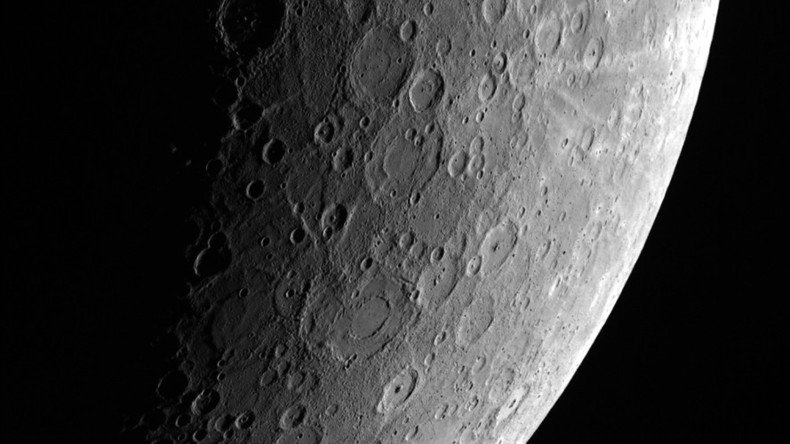Monday’s rare Mercury transit across the Sun: What you need to know (VIDEO)

The rare transit of Mercury that occurs once every 13 to 14 years when it passes between the Sun and the Earth is taking place Monday, May 9. Here’s everything you need to know about the sighting, and some facts about the weird rocky planet.
On Monday, Mercury will pass between the Earth and the Sun, a fascinating process that occurs once every dozen years or so.
The transit, which will look like a small black spec, will last about seven hours from approximately 11:12am to 6:24pm UTC and is viewable from most of Western Europe and North America, all of South America and also from your computer screens.
No solar telescope? Check out https://t.co/F2DCjn2jov to find out how you can watch the Mercury transit online! pic.twitter.com/n5gKOhrbwR
— NASASunEarth (@NASASunEarth) 7 мая 2016 г.
How to watch it
As with any solar eclipse, looking directly at the sun is not recommended, i.e. a really really bad idea. Unlike a moon eclipse, the sun is still fully visible with a Mercury transit, so in order to catch a glimpse of the tiny planet in all its glory, you’re gonna need some help.
Those of you who have purchased “Mercury transit special glasses” in anticipation for such an occasion are out of luck. According to DW, the glasses don’t provide enough protection for this particularly intense transit.
READ MORE: Giant ‘icy spider’ captured on Pluto’s surface in latest NASA image (PHOTO)
You can watch the process through a telescope, but ONLY one equipped with a solar filter. In fact, attempting to look at the sun through a regular telescope can be even more dangerous that just looking at the sun directly – think of the scorching effect of a simple magnifying glass.
If you don't have a telescope for Monday's #MercuryTransit, join a viewing party near you! https://t.co/LjPP4K8hIPpic.twitter.com/3POjMoq2s5
— Astronomy Now (@AstronomyNow) 7 мая 2016 г.
The safest (and easiest) option is undoubtedly to catch the show online. NASA and the ESA are running a livestream of the transit on their website, which means an uninterrupted mercury transit without the risk of going blind.
Mini Mercury facts
To brush up on your Mercury knowledge before the big day, here are some of the teeny planet’s highlights:
1. Mercury is the baby planet in the solar system. At just 4,880 km in diameter, it is the smallest of all planets (sorry, Pluto fans!) - that’s almost three times smaller than Earth and almost 30 times smaller than Jupiter for scale.
2. Mercury is orbiting 46 to 70 million kilometers away from the Sun, making it the closest planet with the most eccentric orbit (that’s a scientific term). One complete revolution takes about 88 days, meaning one Earth year is the equivalent to four years on Mercury.
3. However, counting solar days is much trickier if you are on Mercury. There, it takes 176 Earth days for the Sun to go around the sky once because of the so-called spin-orbit resonance. The orbit’s shape and the resonance result in an even weirder effect of the Sun actually slowing down, going backwards and then forward again. Can you imagine that?
4. Unfortunately, there’s a slim chance of anyone ever observing this show and staying alive, as Mercury being the closest planet to the Sun means it can get quite hot. Temperatures can reach as high as 427 degrees Celsius (800 degrees Fahrenheit). Meanwhile, on the side that’s not facing the sun, temps can drop as low as minus 173 °C (-279 °F). Brrr!
5. Mercury’s surface is covered in bumps and rocks thanks to its many impacts with meteorites over the millions of years. A topographic animation from NASA shows the planet’s highest and lowest points, ranging from its highest at 2.78 miles (4.48 km) to the lowest at 3.34 miles (5.38 km).
If you simply can’t catch 2016’s Mercury madness, make sure to mark your diary for the next opportunity on November 11, 2019. After that, you’ll be waiting until 2032.
READ MORE: Rings of fire: Saturn’s moons split in awesome Cassini image (PHOTOS)












